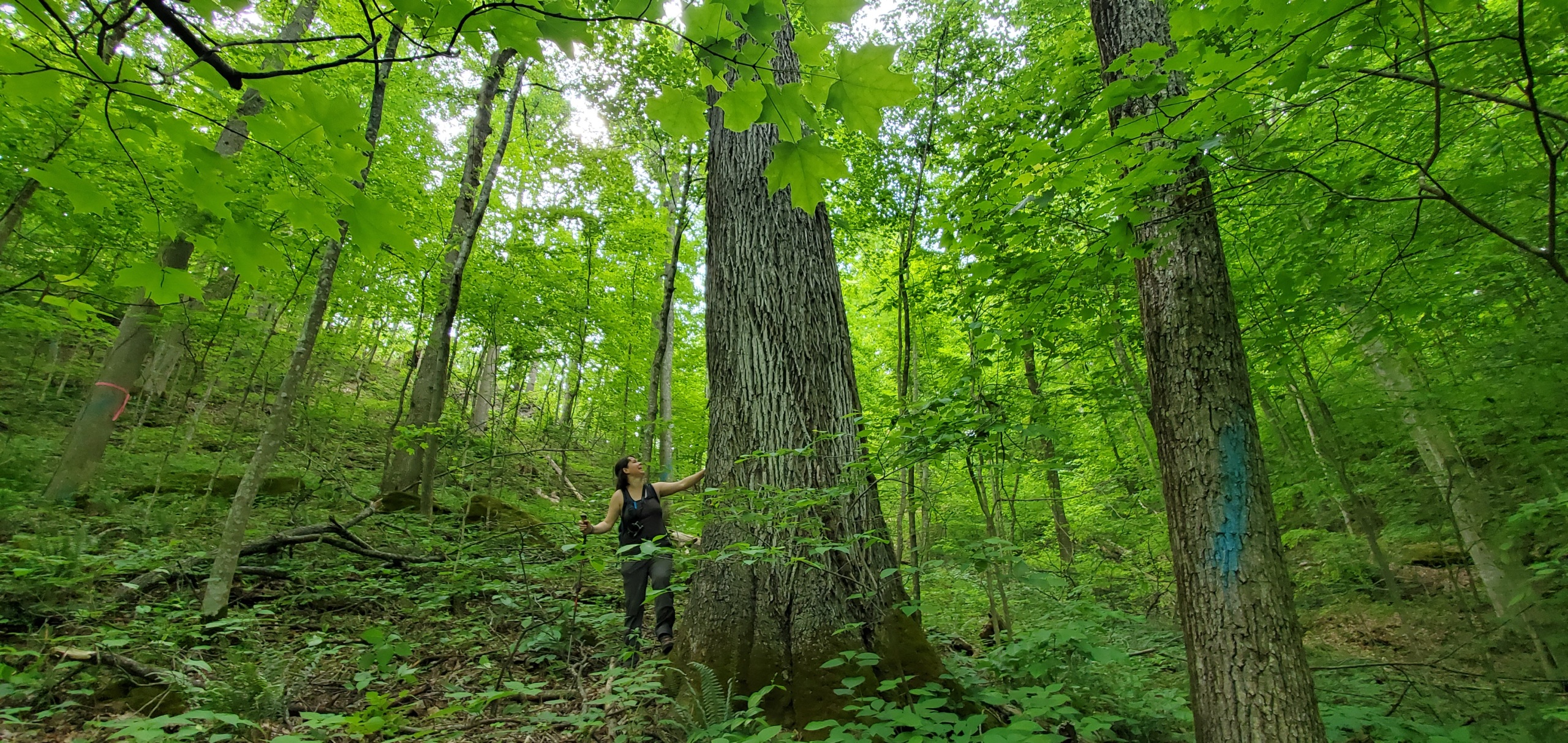
Tell the Biden Administration: Protect our Oldest Trees
Our mature and old-growth forests are a natural treasure worth protecting but many of them are threatened by logging.
Send your message to the Biden administration
There’s something amazing about being in a forest. The wind in the trees, bird song, running water and the sounds of small mammals and lizards scurrying under the leaf cover give us a feeling that we can’t get anywhere else.
Some of our most special forests are mature and old-growth forests, composed of trees that have been standing for longer than most people have been alive. These complex forest ecosystems provide vital and unique habitats for birds up above, critters down below and everything in between.
Road-building, industrial logging, and mining threaten our remaining mature and old-growth trees and forests, increasing the risk of climate change and destroying essential habitat for countless species and degrading the land. But, from Vermont’s Green Mountain National Forest to the Monongahela National Forest in West Virginia to the Kootenai National Forest in Montana, more than 50 million acres of mature and old-growth forests are on federal lands in the United States and are unprotected from logging.
Trees older than 100 years old have already been cut down in Wisconsin’s Chequamegon-Nicolet National Forest.
Logging is also underway in Oregon’s Malheur National Forest
and in the Bureau of Land Management’s Medford District in Oregon.
The Forest Service is planning to log older trees in North Carolina
and in West Virginia.
To stop these logging projects and others like them, we are calling on the Biden Administration to protect mature and old-growth trees and forests on federal public lands from logging, and to give old-growth forests that have been lost time to regrow.
Beyond their ecological value, trees and forests absorb huge amounts of carbon—more than 10% of our country’s annual climate pollution—and are a climate solution that we lose the moment we cut them down. Setting aside the oldest, biggest trees to act as natural climate solutions and ecological anchors is a smart strategy that should be implemented immediately on federal lands. Trees absorb carbon for free, no investment in new carbon capture technology is required.
Without mature and old-growth forest and trees, birds like the red-cockaded woodpecker and mammals like the marten will be without a home. Without forests to filter drinking water, millions of people could lose a clean source of water. And without mature and old growth forests to absorb carbon, climate change could be worse. We need these forests and trees if we are going to have a liveable future on this planet.
We don’t have much time. To ensure these forests are protected, the Biden administration should enact durable protections before the end of 2024.
More than 20 years ago, we worked with a coalition to collect 1.6 million public comments to convince President Clinton to enact the Roadless Rule to project 58.5 million acres of forests in 2001.
And with our coalition of more than 120 groups across the country, we’re making progress getting the Biden administration to change the way they approach forest protection. On Earth Day 2022, President Biden issued an executive order that directs federal agencies to conduct an inventory of mature and old-growth forests on America’s federal lands so that policies can be adopted to protect them. In spring 2023 both the Forest Service and Bureau of Land Management announced that they were seeking comments from the public about policies to protect our oldest trees. Our supporters and allies across the country responded by submitting more than 500,000 public comments.
In December 2023, the Forest Service announced that they plan to change the way old-growth is managed on national forest lands.
The Forest Service and Bureau of Land Management are taking steps in the right direction but we know they are hearing from the timber industry and their allies in Congress. Senators have introduced bills that would stop the administration from taking action. We have to educate and mobilize the public to embolden the administration to stand up to this pressure and do the right thing.
The Biden administration must enact policies that apply to all old-growth and mature trees and forests on federal forest lands and completely end the sale of old-growth to timber mills. With enough public support, we can persuade them it’s in their best interest to enact the strongest protections possible.
Our national forests should be places of conservation, not destruction.
ADD YOUR NAME
If we are successful in persuading the administration to take the strongest possible action, we could protect up to 50 million acres of mature and old-growth from logging. In 40, 80 and 120 years, there will be more old-growth than there is now.
Ellen runs campaigns to protect America's beautiful places, from local beachfronts to remote mountain peaks. Prior to her current role, Ellen worked as the organizing director for Environment America’s Climate Defenders campaign. Ellen lives in Denver, where she likes to hike in Colorado's mountains.
